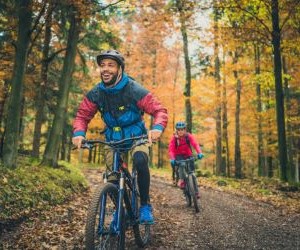Learn how to deal with punctures on long rides with prevention tips, repair techniques, and smart gear choices to keep rolling without stress.
HOW CAN I CYCLE MORE EFFICIENTLY?
Cycling efficiency combines biomechanics, aerodynamics, power output, and energy management. Efficient cycling reduces fatigue, improves speed, and maximizes endurance. By optimizing pedaling technique, bike fit, gear selection, and training strategy, cyclists can convert effort into maximum forward motion. Understanding the physiological and mechanical factors influencing efficiency allows riders to ride faster, farther, and with less energy expenditure.

Understanding cycling efficiency
Cycling efficiency is the ratio of mechanical power applied to the pedals versus energy expended. Higher efficiency means more forward motion for the same effort. Factors affecting efficiency include pedaling technique, cadence, body position, bike fit, and metabolic conditioning.
Mechanical vs. physiological efficiency
Mechanical efficiency refers to power transferred to the drivetrain without loss, while physiological efficiency relates to how the body converts energy into work. Both must be optimized for overall cycling performance.
Mechanical: pedal stroke, gear selection, and bike fit
Physiological: cardiovascular fitness, muscle endurance, and neuromuscular coordination
External factors: wind, terrain, and weight distribution
Pedaling technique optimization
Efficient pedaling maximizes power output while minimizing energy loss. Focus on smooth pedal strokes, even power distribution, and cadence consistency for climbing, sprinting, and flat terrain.
Smooth pedal stroke
Visualize a circular motion, applying power throughout the pedal revolution. Engage the quadriceps, glutes, hamstrings, and calves to maintain continuous force application.
Push down with quadriceps and glutes
Pull up with hamstrings using clipless pedals
Use calves during ankle extension for smooth stroke
Practice one-leg drills to improve balance and efficiency
Cadence control
Optimal cadence reduces muscular fatigue and improves metabolic efficiency. Aim for 80–100 rpm on flat terrain, adjusting to terrain and fitness level. Higher cadences increase cardiovascular demand but reduce local muscular strain.
Flat roads: 90 rpm for endurance
Climbs: 70–90 rpm depending on gradient
Sprints: 100+ rpm with high gear ratio for explosive power
Bike fit and position
Proper bike fit minimizes energy loss and reduces fatigue. Optimize saddle height, handlebar reach, and cleat position to align joints and muscles for efficient power transfer.
Saddle and pedal alignment
Saddle height should allow slight knee bend at bottom of pedal stroke. Pedal and cleat positioning ensures even force application and prevents hotspots or discomfort.
Saddle height: 25–35° knee bend at bottom stroke
Saddle fore-aft: ensure knee over pedal spindle alignment
Cleat positioning: center of ball-of-foot over spindle
Aerodynamic position
A slightly forward-leaning, compact position reduces drag while maintaining power output. Core strength and flexibility support sustained aero posture without compromising efficiency.
Maintain flat back and relaxed shoulders
Bend elbows for comfort and stability
Engage core to maintain power and posture
YOU MAY ALSO BE INTERESTED






